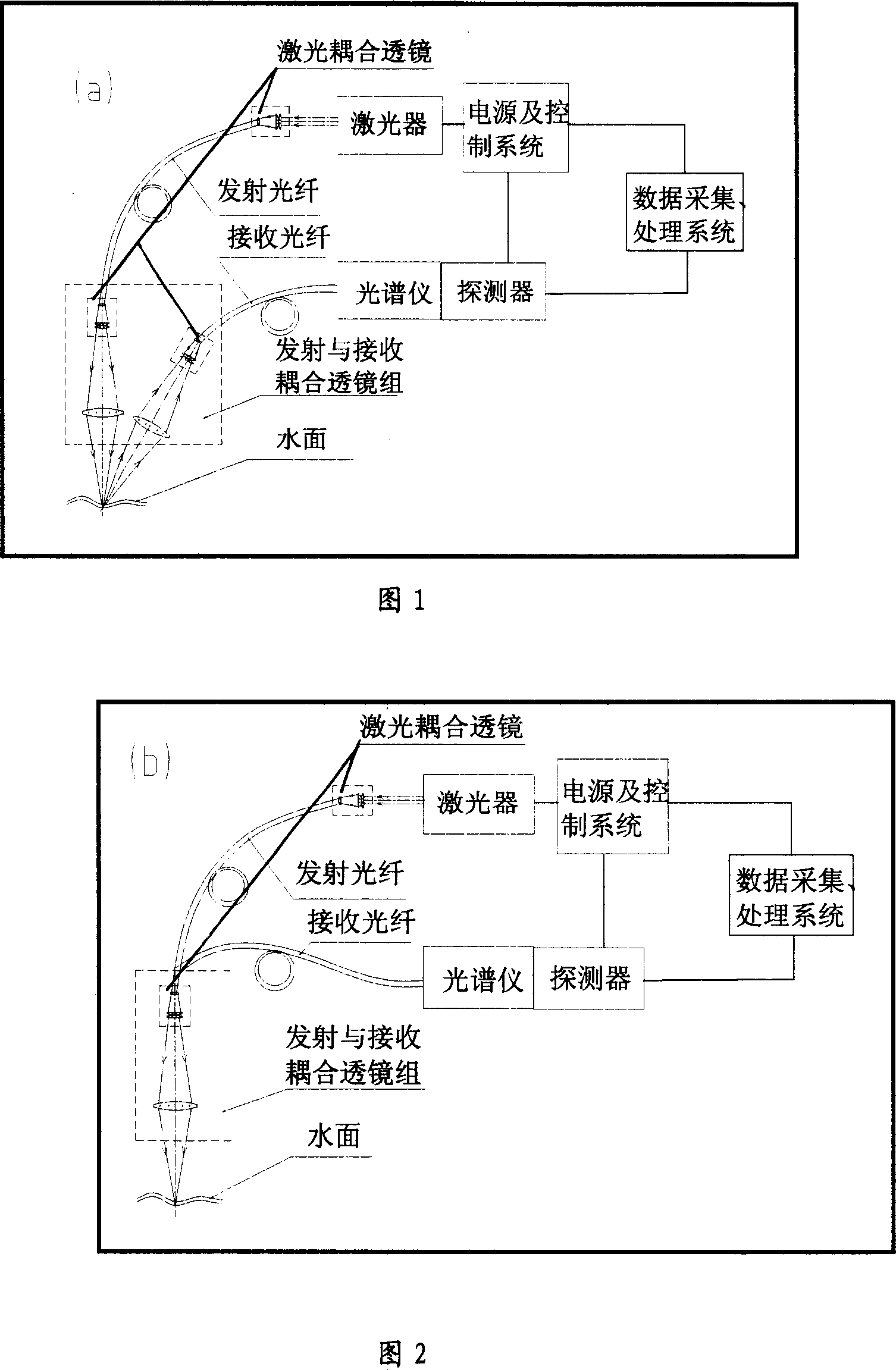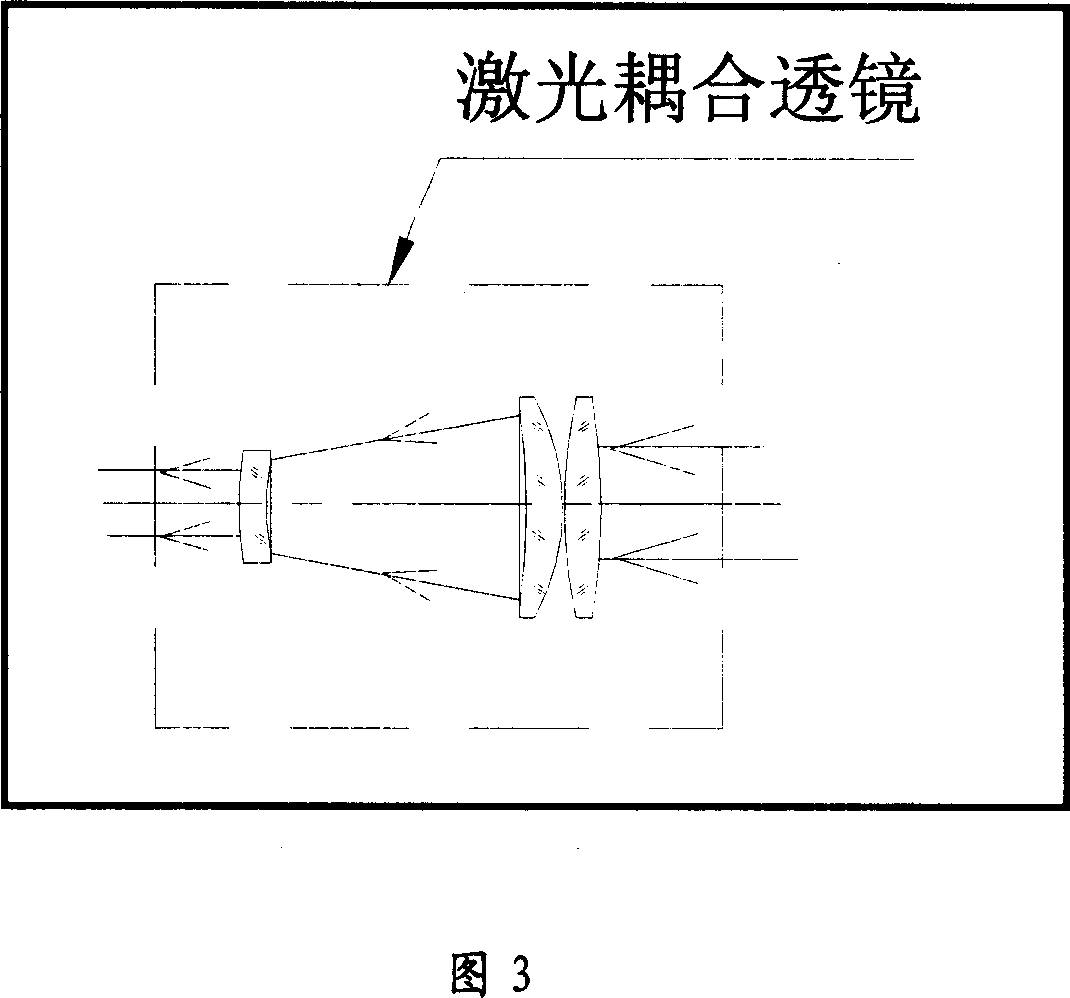Laser breakdown spectrographic detection method and system for metal pollutants in water body
A technology of laser breakdown spectroscopy and detection method, applied in the field of laser spectroscopy detection of metal pollutants in water bodies, can solve the problems of inability to realize, complex analysis procedures, secondary pollution of samples, etc., to avoid the influence of signals, reduce system volume, The effect of avoiding secondary pollution
- Summary
- Abstract
- Description
- Claims
- Application Information
AI Technical Summary
Problems solved by technology
Method used
Image
Examples
Embodiment Construction
[0018] As shown in Figure 1, the laser breakdown spectroscopy detection system for metal pollutants in water has a laser coupling lens installed at the output end of the laser. The output end of the laser coupling lens and the light input end of the laser coupling lens group are connected by a transmitting fiber; the input of the spectrometer The optical end is connected to the receiving fiber, the spectrometer output end is equipped with a CCD detector, the other end of the receiving fiber is connected to the light input end of another laser coupling lens; the signal output end of the CCD detector is connected to the data acquisition and processing system, and the power supply And the computer control system provides the power supply for the laser and the detector and establishes data communication with the detector and the data acquisition and processing system.
[0019] As shown in Figure 2, the laser breakdown spectroscopy detection system for metal pollutants in the water bod...
PUM
 Login to View More
Login to View More Abstract
Description
Claims
Application Information
 Login to View More
Login to View More - R&D
- Intellectual Property
- Life Sciences
- Materials
- Tech Scout
- Unparalleled Data Quality
- Higher Quality Content
- 60% Fewer Hallucinations
Browse by: Latest US Patents, China's latest patents, Technical Efficacy Thesaurus, Application Domain, Technology Topic, Popular Technical Reports.
© 2025 PatSnap. All rights reserved.Legal|Privacy policy|Modern Slavery Act Transparency Statement|Sitemap|About US| Contact US: help@patsnap.com


